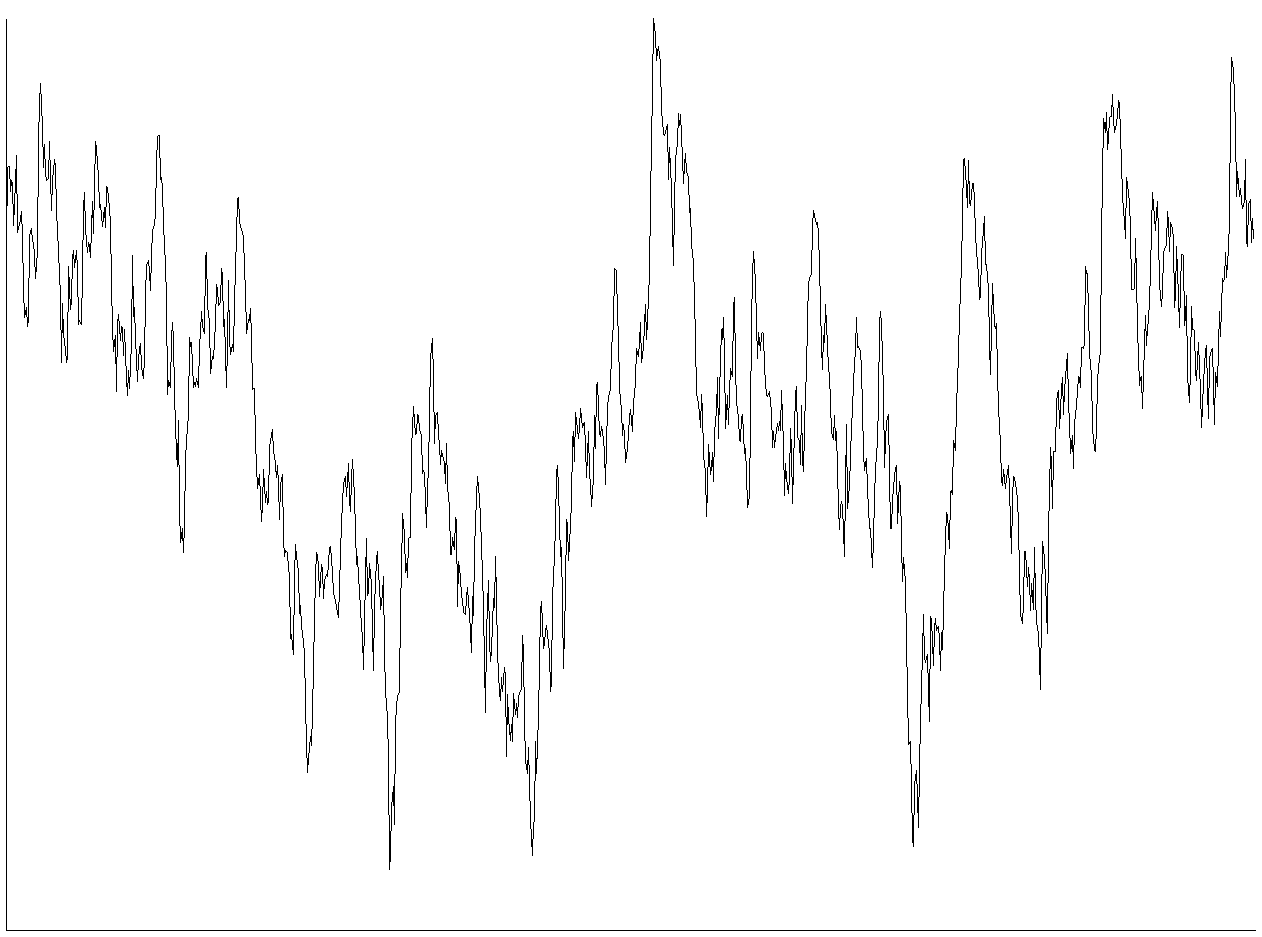|
Near–far Problem
The near–far problem or hearability problem is the effect of a strong signal from a near signal source in making it hard for a receiver to hear a weaker signal from a further source due to adjacent-channel interference, co-channel interference, distortion, capture effect, dynamic range limitation, or the like. Such a situation is common in wireless communication systems, in particular CDMA. In some signal jamming techniques, the near–far problem is exploited to disrupt (" jam") communications. Analogies Consider a receiver and two transmitters, one close to the receiver, the other far away. If both transmitters transmit simultaneously and at equal powers, then due to the inverse square law the receiver will receive more power from the nearer transmitter. Since one transmission's signal is the other's noise, the signal-to-noise ratio (SNR) for the further transmitter is much lower. This makes the farther transmitter more difficult, if not impossible, to understand. In sh ... [...More Info...] [...Related Items...] OR: [Wikipedia] [Google] [Baidu] |
Adjacent-channel Interference
Adjacent-channel interference (ACI) is interference caused by extraneous power from a signal in an adjacent channel. ACI may be caused by inadequate filtering (such as incomplete filtering of unwanted modulation products in FM systems), improper tuning or poor frequency control (in the reference channel, the interfering channel or both). ACI is distinguished from crosstalk. Origin The adjacent-channel interference which receiver A experiences from a transmitter B is the sum of the power that B emits into A's channel—known as the "unwanted emission", and represented by the ACLR (Adjacent Channel Leakage Ratio)—and the power that A picks up from B's channel, which is represented by the ACS (Adjacent Channel Selectivity). B emitting power into A's channel is called adjacent-channel leakage (unwanted emissions). It occurs for two reasons. First, because RF filters require a roll-off, and do not eliminate a signal completely. Second, due to intermodulation in B's amplifiers ... [...More Info...] [...Related Items...] OR: [Wikipedia] [Google] [Baidu] |
Signal-to-noise Ratio
Signal-to-noise ratio (SNR or S/N) is a measure used in science and engineering that compares the level of a desired signal to the level of background noise. SNR is defined as the ratio of signal power to noise power, often expressed in decibels. A ratio higher than 1:1 (greater than 0 dB) indicates more signal than noise. SNR is an important parameter that affects the performance and quality of systems that process or transmit signals, such as communication systems, audio systems, radar systems, imaging systems, and data acquisition systems. A high SNR means that the signal is clear and easy to detect or interpret, while a low SNR means that the signal is corrupted or obscured by noise and may be difficult to distinguish or recover. SNR can be improved by various methods, such as increasing the signal strength, reducing the noise level, filtering out unwanted noise, or using error correction techniques. SNR also determines the maximum possible amount of data that ... [...More Info...] [...Related Items...] OR: [Wikipedia] [Google] [Baidu] |
Hidden Node Problem
In wireless networking, the hidden node problem or hidden terminal problem occurs when a Node (networking), node can communicate with a wireless access point (AP), but cannot directly communicate with other nodes that are communicating with that AP. This leads to difficulties in medium access control sublayer since multiple nodes can send data packets to the AP simultaneously, which creates interference at the AP resulting in no packet getting through. Although some loss of packets is normal in wireless networking, and the higher layers will resend them, if one of the nodes is transferring a lot of large packets over a long period, the other node may get very little goodput. Practical protocol solutions exist to the hidden node problem. For example, IEEE 802.11 RTS/CTS, Request To Send/Clear To Send (RTS/CTS) mechanisms where nodes send short packets to request permission of the access point to send longer data packets. As responses from the AP are seen by all the nodes, the node ... [...More Info...] [...Related Items...] OR: [Wikipedia] [Google] [Baidu] |
Direct-sequence Spread Spectrum
In telecommunications, direct-sequence spread spectrum (DSSS) is a spread-spectrum modulation technique primarily used to reduce overall signal interference. The direct-sequence modulation makes the transmitted signal wider in bandwidth than the information bandwidth. After the despreading or removal of the direct-sequence modulation in the receiver, the information bandwidth is restored, while the unintentional and intentional interference is substantially reduced. Swiss inventor, Gustav Guanella proposed a "means for and method of secret signals". With DSSS, the message symbols are modulated by a sequence of complex values known as ''spreading sequence''. Each element of the spreading sequence, a so-called ''chip'', has a shorter duration than the original message symbols. The modulation of the message symbols scrambles and spreads the signal in the spectrum, and thereby results in a bandwidth of the spreading sequence. The smaller the chip duration, the larger the bandw ... [...More Info...] [...Related Items...] OR: [Wikipedia] [Google] [Baidu] |
Cellular Phone
A mobile phone or cell phone is a portable telephone that allows users to make and receive calls over a radio frequency link while moving within a designated telephone service area, unlike fixed-location phones ( landline phones). This radio frequency link connects to the switching systems of a mobile phone operator, providing access to the public switched telephone network (PSTN). Modern mobile telephony relies on a cellular network architecture, which is why mobile phones are often referred to as 'cell phones' in North America. Beyond traditional voice communication, digital mobile phones have evolved to support a wide range of additional services. These include text messaging, multimedia messaging, email, and internet access (via LTE, 5G NR or Wi-Fi), as well as short-range wireless technologies like Bluetooth, infrared, and ultra-wideband (UWB). Mobile phones also support a variety of multimedia capabilities, such as digital photography, video recording, and ... [...More Info...] [...Related Items...] OR: [Wikipedia] [Google] [Baidu] |
Adaptive Filter
An adaptive filter is a system with a linear filter that has a transfer function controlled by variable parameters and a means to adjust those parameters according to an optimization algorithm. Because of the complexity of the optimization algorithms, almost all adaptive filters are digital filters. Adaptive filters are required for some applications because some parameters of the desired processing operation (for instance, the locations of reflective surfaces in a reverberant space) are not known in advance or are changing. The closed loop adaptive filter uses feedback in the form of an error signal to refine its transfer function. Generally speaking, the closed loop adaptive process involves the use of a cost function, which is a criterion for optimum performance of the filter, to feed an algorithm, which determines how to modify filter transfer function to minimize the cost on the next iteration. The most common cost function is the mean square of the error signal. As the pow ... [...More Info...] [...Related Items...] OR: [Wikipedia] [Google] [Baidu] |
Signal Processing
Signal processing is an electrical engineering subfield that focuses on analyzing, modifying and synthesizing ''signals'', such as audio signal processing, sound, image processing, images, Scalar potential, potential fields, Seismic tomography, seismic signals, Altimeter, altimetry processing, and scientific measurements. Signal processing techniques are used to optimize transmissions, Data storage, digital storage efficiency, correcting distorted signals, improve subjective video quality, and to detect or pinpoint components of interest in a measured signal. History According to Alan V. Oppenheim and Ronald W. Schafer, the principles of signal processing can be found in the classical numerical analysis techniques of the 17th century. They further state that the digital refinement of these techniques can be found in the digital control systems of the 1940s and 1950s. In 1948, Claude Shannon wrote the influential paper "A Mathematical Theory of Communication" which was publis ... [...More Info...] [...Related Items...] OR: [Wikipedia] [Google] [Baidu] |
Noise (physics)
In electronics, noise is an unwanted disturbance in an electrical signal. Noise generated by electronic devices varies greatly as it is produced by several different effects. In particular, noise is inherent in physics and central to thermodynamics. Any conductor with electrical resistance will generate thermal noise inherently. The final elimination of thermal noise in electronics can only be achieved cryogenically, and even then quantum noise would remain inherent. Electronic noise is a common component of noise in signal processing. In communication systems, noise is an error or undesired random disturbance of a useful information signal in a communication channel. The noise is a summation of unwanted or disturbing energy from natural and sometimes man-made sources. Noise is, however, typically distinguished from interference, for example in the signal-to-noise ratio (SNR), signal-to-interference ratio (SIR) and signal-to-noise plus interference ratio (SNIR) measures ... [...More Info...] [...Related Items...] OR: [Wikipedia] [Google] [Baidu] |
Co-channel Interference
Co-channel interference or CCI is crosstalk from two different radio transmitters using the same channel. Co-channel interference can be caused by many factors from weather conditions to administrative and design issues. Co-channel interference may be controlled by various radio resource management schemes. Cellular mobile networks In cellular mobile communication (GSM & LTE Systems, for instance), frequency spectrum is a precious resource which is divided into non-overlapping spectrum bands which are assigned to different cells (In cellular communications, a cell refers to the hexagonal/circular area around the base station antenna). However, after certain geographical distance, these frequency bands are re-used, i.e. the same spectrum bands are reassigned to other distant cells. The co-channel interference arises in the cellular mobile networks owing to this phenomenon of frequency reuse. Thus, besides the intended signal from within the cell, signals at the same freque ... [...More Info...] [...Related Items...] OR: [Wikipedia] [Google] [Baidu] |
Signal (information Theory)
A signal is both the process and the result of Signal transmission, transmission of data over some transmission media, media accomplished by embedding some variation. Signals are important in multiple subject fields including signal processing, information theory and biology. In signal processing, a signal is a function that conveys information about a phenomenon. Any quantity that can vary over space or time can be used as a signal to share messages between observers. The ''IEEE Transactions on Signal Processing'' includes audio signal, audio, video, speech, image, sonar, and radar as examples of signals. A signal may also be defined as observable change in a quantity over space or time (a time series), even if it does not carry information. In nature, signals can be actions done by an organism to alert other organisms, ranging from the release of plant chemicals to warn nearby plants of a predator, to sounds or motions made by animals to alert other animals of food. Signa ... [...More Info...] [...Related Items...] OR: [Wikipedia] [Google] [Baidu] |
Inverse Square Law
In science, an inverse-square law is any scientific law stating that the observed "intensity" of a specified physical quantity is inversely proportional to the square of the distance from the source of that physical quantity. The fundamental cause for this can be understood as geometric dilution corresponding to point-source radiation into three-dimensional space. Radar energy expands during both the signal transmission and the reflected return, so the inverse square for both paths means that the radar will receive energy according to the inverse fourth power of the range. To prevent dilution of energy while propagating a signal, certain methods can be used such as a waveguide, which acts like a canal does for water, or how a gun barrel restricts hot gas expansion to one dimension in order to prevent loss of energy transfer to a bullet. Formula In mathematical notation the inverse square law can be expressed as an intensity (I) varying as a function of distance (d) from so ... [...More Info...] [...Related Items...] OR: [Wikipedia] [Google] [Baidu] |






